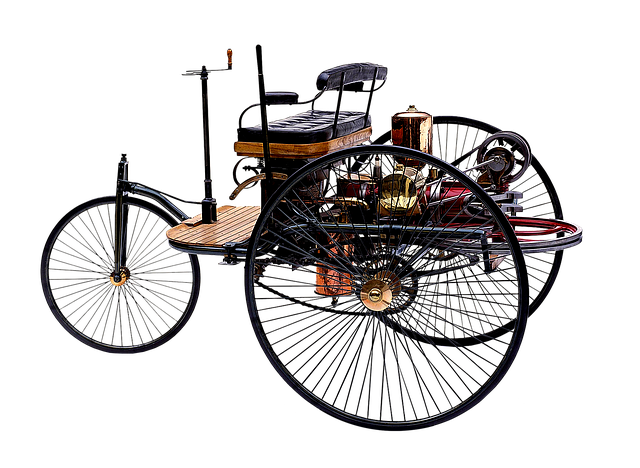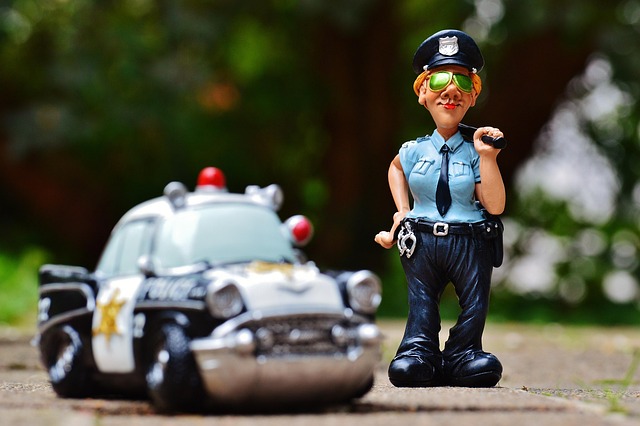Looking to register your car in California? This comprehensive guide walks you through every step, from understanding the DMV’s VIN verification process to securing your license plate. First, grasp the importance of the VIN (Vehicle Identification Number) verification for accurate and safe registration. Next, gather essential documents, prepare your vehicle, complete the application, pay fees, and receive your plates. Master these steps, and you’ll have your California car registered in no time.
- Understanding the DMV VIN Verification Process
- Gathering Necessary Documents for Car Registration
- Preparing Your Vehicle for Inspection
- Completing the California Car Registration Application
- Paying Registration Fees and Obtaining Your License Plate
Understanding the DMV VIN Verification Process

The DMV VIN verification process is a crucial step when registering your car in California. It involves using the Vehicle Identification Number (VIN) to validate key information about the vehicle, such as its make, model, year, and specifications. This ensures that the car meets all safety and emissions standards required by the state. During this process, a mobile vin verifier or vin inspection service may be used to streamline the verification step, making it more convenient for California residents.
A mobile vin inspection allows you to get this critical information checked quickly and efficiently without having to visit a DMV office. This is particularly useful if your car is older or has unique features that require specialized knowledge to verify. By understanding the VIN verification process and leveraging available tools like mobile vin verifiers, you can ensure a smoother registration experience for your vehicle in California.
Gathering Necessary Documents for Car Registration

Before you start the car registration process in California, it’s crucial to gather all the necessary documents. This includes your vehicle’s Registration Application (Form DV306), which can be obtained from the California Department of Motor Vehicles (DMV). Additionally, you’ll need proof of insurance, a valid driver’s license, and the Certificate of Title, often referred to as the “title.” The Vehicle Identification Number (VIN) is another key component that must be verified. Many DMV locations offer a mobile VIN inspection or verification service, making it easier for you to confirm your vehicle’s details before registering.
Remember to bring these documents with you when visiting a DMV field office. If you’re opting for a mobile VIN inspection or verification, ensure the service provider is reputable and authorized by the DMV to avoid any potential issues during the registration process. Proper documentation is key to ensuring a smooth experience at the DMV.
Preparing Your Vehicle for Inspection

Before scheduling a DMV visit for registration, ensure your vehicle is prepared for inspection by completing a few essential checks. Start with a thorough wash to make any potential issues easily visible. Pay close attention to the vehicle’s exterior, looking for signs of damage, corrosion, or wear that might need repair. Check all lights—brakes, turn signals, and headlights—to ensure they’re functioning correctly, as this is a critical safety feature checked during registration.
For a seamless process, consider arranging a mobile vin inspection or using a vin inspector to verify your vehicle’s identity (VIN) before heading to the DMV. This step ensures that all documentation is accurate and up-to-date, further simplifying the registration procedure. A valid and accurate VIN is crucial for successful registration, so don’t skip this vital preparation step.
Completing the California Car Registration Application

To register your car in California, you’ll need to complete the California Car Registration Application, which is a crucial step in the process. This form requires detailed information about your vehicle, including its make, model, and year. You will also be asked for your Vehicle Identification Number (VIN), which serves as a unique identifier for your car and is essential for the DMV vin verification process.
Ensure that you have accurate and up-to-date details before proceeding. You can conveniently request a mobile vin inspection or use a mobile vin verifier to obtain this information quickly and accurately. This step guarantees that your vehicle’s data is reliable, making the registration process smoother.
Paying Registration Fees and Obtaining Your License Plate

After completing your vehicle’s registration application at the DMV, it’s time to cover the registration fees. The cost varies depending on the type and age of your vehicle. Once paid, you’ll receive a temporary registration permit. This allows you to take your car off the lot and onto the road temporarily. Before driving, you must obtain your license plate. This involves scheduling a separate appointment for a vin inspection at a designated DMV location or using a mobile vin verifier service for a more convenient option.
During the vin inspection, which is crucial for accuracy in identifying your vehicle, a representative will check the Vehicle Identification Number (VIN) and ensure it matches the data on file. This process might take some time but is essential to prevent fraud and ensure proper registration. After successful verification, you’ll receive your permanent license plate, allowing you to legally operate your vehicle in California.
Registering a car in California involves several straightforward steps, starting with understanding the DMV’s VIN verification process. By gathering all necessary documents, preparing your vehicle for inspection, and completing the registration application diligently, you can ensure a smooth process. Remember to pay the required fees and obtain your license plate to legally operate your vehicle on California roads. This guide has outlined each step, making it easier to navigate the car registration process.



